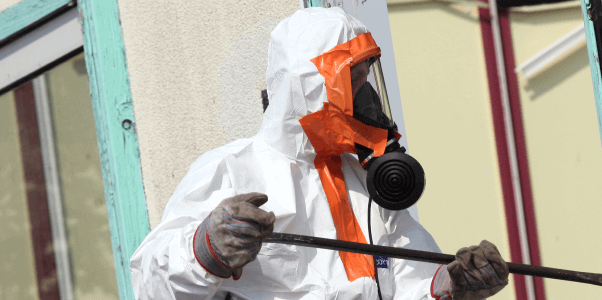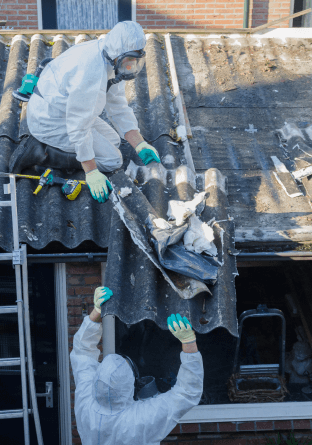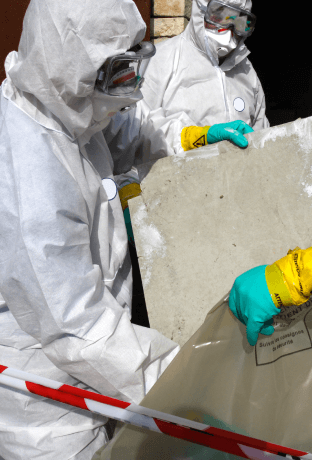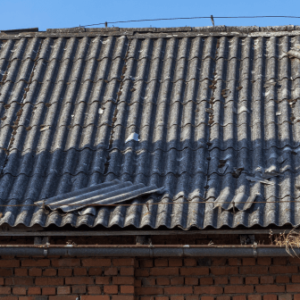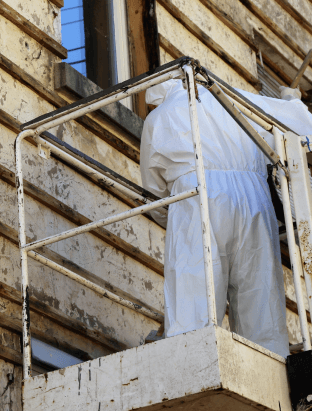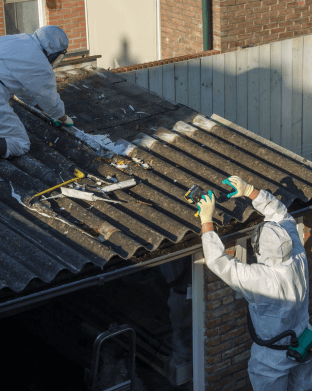Can You Recycle Asbestos? Short Answer: Yes
Asbestos recycling occurs when the material is transformed into completely safe silicate glass at very high temperatures. The glass can then be used to make ceramics and stoneware.
That said, asbestos recycling and asbestos removal and disposal should never be attempted without an asbestos professional. Inhaling asbestos fibers can cause mesothelioma, a rare and deadly cancer, as well as other asbestos-related diseases, such as lung cancer or asbestosis.
If you have an older home or office building and suspect it contains asbestos, do not try to remove asbestos-containing waste yourself. Contact your local hazardous waste center to find an asbestos recycling center or asbestos recycling plant near you.
Why is Asbestos Difficult to Recycle?
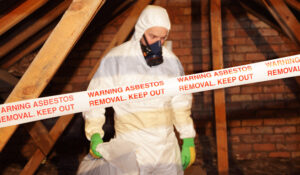 There are six different types of asbestos: chrysotile, crocidolite, amosite, anthophyllite, tremolite, and actinolite.
There are six different types of asbestos: chrysotile, crocidolite, amosite, anthophyllite, tremolite, and actinolite.
Each of these types of asbestos was used as building materials for decades before it was known to cause deadly diseases like mesothelioma.
Because asbestos is so dangerous to handle due to the risk of exposure, asbestos recycling is a risky process. Asbestos can’t be dumped at general waste disposal sites like other types of waste.
Instead, asbestos must be made into solid waste first in order to be recycled.
What Types of Asbestos Products Can Be Recycled?
All types of asbestos can be recycled when using the correct recycling process. However, all forms of asbestos and any amount of asbestos — no matter how small — may pose health concerns. This danger is why it’s so important to properly recycle asbestos products.
Friable vs. Non-Friable Asbestos
According to the U.S. Department of Agriculture, there are two types of asbestos fibers.
These are:
- Friable asbestos: This includes asbestos-containing materials that can be crumbled, pulverized, or reduced to powder with only hand pressure. The fibers released can easily be breathed in or swallowed, leading to mesothelioma, lung cancer, or asbestosis.
- Non-friable asbestos: While it poses less of a risk, it requires external and high amounts of pressure to recycle, which is also dangerous. It can still be crushed into asbestos powder and put anyone nearby in harm's way.
Asbestos removal and disposal should be undertaken in any building where people may come into contact with asbestos products. Still, asbestos disposal and recycling should never be undertaken by anyone without the proper training and equipment.
If you or a loved one developed mesothelioma after exposure to asbestos-containing products, we can help. Get our Free Veterans Packet to explore financial compensation, treatments, and military benefits that could be available to you.
